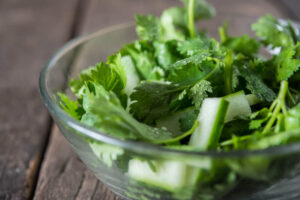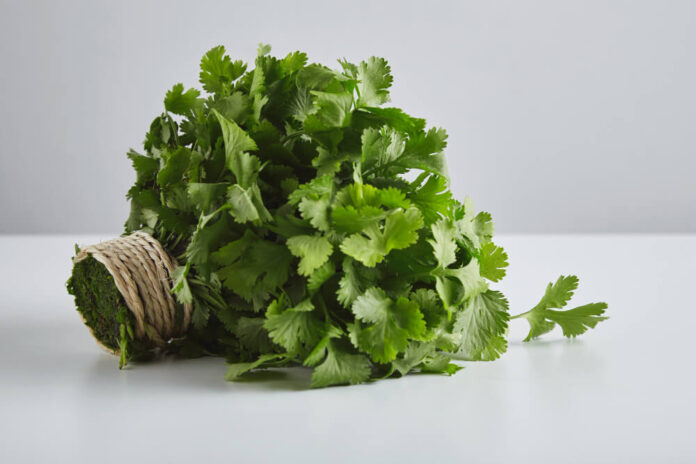Cilantro is an essential herb in kitchens worldwide. Its fresh, citrusy flavor adds life to countless dishes, from tacos to curries. But recently, a cilantro shortage has left shelves empty and prices soaring. This disruption has impacted home cooks, restaurants, and grocery stores alike. Let’s explore the reasons behind this shortage, its effects, and what the future holds.
Is There a Cilantro Shortage?
Yes, there is a widespread cilantro shortage, and it’s causing a stir in the food industry. This herb, often called “coriander leaves,” is a staple in many cuisines, especially Mexican, Indian, and Southeast Asian. However, in recent months, the availability of cilantro has plummeted.
The shortage has hit hard in regions like the U.S. and Canada, which rely heavily on imports from Mexico. Grocery stores are struggling to keep cilantro in stock, and restaurants are having trouble maintaining their menus. Even small-scale farms in the U.S. are unable to meet the sudden demand.
This isn’t just a minor inconvenience for food lovers. Cilantro is a key ingredient in guacamole, salsa, and countless other dishes. Without it, many recipes lose their authentic flavor. As a result, this shortage is being felt both in kitchens and in wallets.
Why Is There a Cilantro Shortage?
The cilantro shortage can be traced to a combination of factors, each compounding the problem.
Adverse Weather Conditions
Mexico, the largest supplier of cilantro to North America, has faced extreme weather. Key growing regions like Puebla have been hit by droughts, hailstorms, and inconsistent rainfall. These weather events have severely damaged cilantro crops, reducing yields significantly.
Cilantro is a delicate herb that thrives in mild conditions. Too much heat or too little water can ruin entire harvests. Unfortunately, unpredictable weather has made it nearly impossible for farmers to maintain stable production.
Pest Infestations
To make matters worse, a widespread aphid infestation has plagued cilantro crops. Aphids are tiny insects that feed on plants, causing leaves to curl and yellow. They also transmit plant diseases, making affected cilantro unfit for sale.
Farmers have struggled to combat these pests, as chemical pesticides can harm the quality of the herb. Organic growers are especially vulnerable, as they rely on natural pest control methods, which take time to implement.
Import Restrictions
Adding to the issue, the U.S. Food and Drug Administration (FDA) has imposed restrictions on cilantro imports from certain Mexican regions. These restrictions stem from concerns about cyclosporiasis, a parasitic illness linked to contaminated cilantro.
While these measures aim to protect public health, they’ve further limited the supply of cilantro entering the U.S. Combined with the weather and pest problems, these restrictions have created a perfect storm for the shortage.
How the Cilantro Shortage Affects Prices
One immediate consequence of the cilantro shortage is the sharp rise in prices. With supply unable to meet demand, the cost of cilantro has skyrocketed.
In some regions, prices have increased by as much as four times the usual amount. What once cost a dollar now sells for several dollars, making cilantro a luxury item for many shoppers. Restaurants, which buy cilantro in bulk, are feeling the pinch even more.
The higher prices have forced businesses to make tough decisions. Some restaurants have reduced portion sizes or removed certain dishes from their menus altogether. Grocery stores are rationing cilantro purchases or turning to less reliable suppliers.
Even home cooks are reconsidering their recipes. The rising cost of cilantro has led some to experiment with substitutes like parsley or Thai basil. While these herbs offer unique flavors, they fall short of replicating cilantro’s distinctive taste.

Regions Most Affected by the Cilantro Shortage
The cilantro shortage has not been evenly felt across the globe. Certain regions are experiencing more severe impacts than others.
North America
The U.S. and Canada have been hit hardest. Both countries rely heavily on cilantro imports from Mexico, which have been severely disrupted. States like California and Texas, where Mexican cuisine is immensely popular, are struggling to meet demand.
Mexico
Ironically, even Mexico is feeling the effects of the shortage. Local markets are seeing higher prices, and smaller communities are finding it difficult to access fresh cilantro. Farmers are facing financial strain as they try to recover from failed crops.
Europe and Asia
While Europe and Asia grow their own cilantro, they too have felt the ripple effects of reduced global supply. Exporters are prioritizing high-demand regions like North America, leaving less cilantro for other markets.
How Long Will the Cilantro Shortage Last?
Predicting the end of the cilantro shortage is challenging. Several factors need to align for supply to stabilize.
First, weather conditions in Mexico must improve. Farmers need consistent rainfall and mild temperatures to recover their crops. Second, pest control measures must be implemented effectively to prevent further infestations. Finally, import restrictions may need to be adjusted as safety concerns are addressed.
Experts believe the shortage could persist for several more months, if not longer. Until then, consumers and businesses will need to adapt to the limited availability and high prices.
Consumer Responses to the Shortage
In response to the cilantro shortage, consumers are finding creative ways to cope. Many are turning to alternative herbs like parsley, Thai basil, or even arugula. While these substitutes don’t perfectly mimic cilantro, they offer fresh flavors that can complement dishes.
Others are exploring new cuisines that don’t rely on cilantro. This shift has led to a surge in interest in Italian, French, and other herb-focused culinary styles. The shortage is also encouraging home gardeners to grow their own cilantro, though this requires time and effort.
Efforts to Address the Cilantro Shortage
Farmers, scientists, and policymakers are working to resolve the cilantro shortage. Efforts include developing pest-resistant cilantro varieties and improving irrigation systems to withstand extreme weather.
Governments are also collaborating with farmers to provide financial aid and resources. These initiatives aim to stabilize cilantro production and prevent future shortages.
Conclusion
The cilantro shortage has disrupted kitchens and businesses around the world. From adverse weather to pest infestations and import restrictions, the causes are complex and interconnected. While the shortage has driven up prices and forced consumers to adapt, efforts are underway to restore supply.
In the meantime, embracing substitutes or growing your own cilantro can help navigate this challenging time. With patience and resilience, the food industry will overcome this hurdle and return to the fresh, vibrant flavors we all love.
Also Read:
